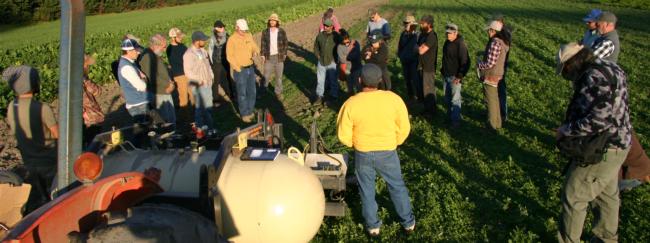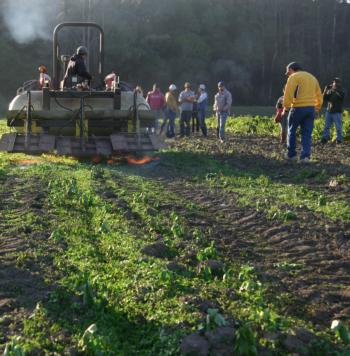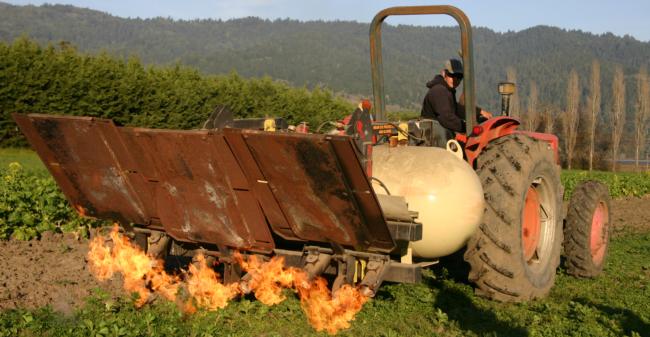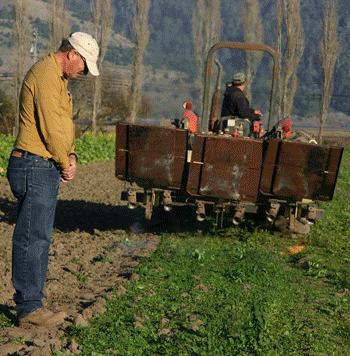Alternative Weed Management - 12/14/17

Among the strategies discussed for reducing the seed bank were:
Prevention:
- Manage amendments like manure and compost to ensure temperatures get high enough to kill weed seed
- Avoid bringing new seeds into fields on boots, tractors and tools
- Do not allow weeds to go to seed
Prior to planting:
- Preparation of stale beds including pre-irrigation to germinate weed seed
- Pre-plant destruction of newly germinated weeds through
- Flaming
- Shallow Tillage
- Solarization
- Steam (still in experimental phase)
- Establishing mulches with plastics or cover crop debris and other organic plant material
Post-planting:
- Flaming prior to crop emergence – particularly slow germinating direct-sown crops like carrots
- Mechanical cultivation, including in-row weeding tools like the finger-weeders shown in this video from Cooperative Extension, Monterey County
Following Steve Fennimore’s presentation, there were field demonstrations of tractor and ATV-mounted flaming rigs from Star Route Farms and Gospel Flat Farm as well as a multi-purpose cultivation rig built by Gospel Flat’s Mickey Murch.
Interpretation during both the presentation and field demo was provided for Spanish-speaking crew and equipment operators.

Send follow-up questions to: Steve Fennimore at the US Ag Research Station in Salinas at: safennimore@ucdavis.edu or 831-755-2896
Additional resources mentioned in discussion during the workshop:
LINKS:
- UCANR solarization resources
- Cooperative Extension, Monterey County mechanical cultivation resources
- Stevan Knezevic, Professor of Integrated Weed Management at University of
Nebraska
- Eric Gallandt, Professor of Weed Ecology at University of Maine
- University of Maine’s Weed Ecology & Management webpage
- R.J. Stephen’s Theory and Practice of Weed Control
- UCANR Weed Management resources (in lettuce)
- University of Vermont summary of mechanical cultivation tools and weed control pros, cons, and sources
- SARE’s classic cultivation guide, “Steel in the Field”
- Proceedings from European Weed Research Society meetings on “Physical & Cultural Weed Control” – (research by Pieter Bleeker frequently cited)
- Local source for mechanical cultivation tools & parts, Hilleby, Intl. Inc.
(in Woodland, CA)
DOCUMENTS:
- Weed Management presentation by Steve Fennimore
- "Organic Weed Management",
Steve Fennimore
- "Weed Seed Biology", Steve Fennimore
- "Practical Weed Control", P. Bleeker
- "Opportunities for Biological Weed Control in Europe", P.C. Scheepens, et al.
- "Innovative Weed Control – Further Information", Charles Merfield, Certified Organic Association of BC
- "Weed Management on Organic Farms",
D. Finny & N. Creamer, NCSU CEFS




